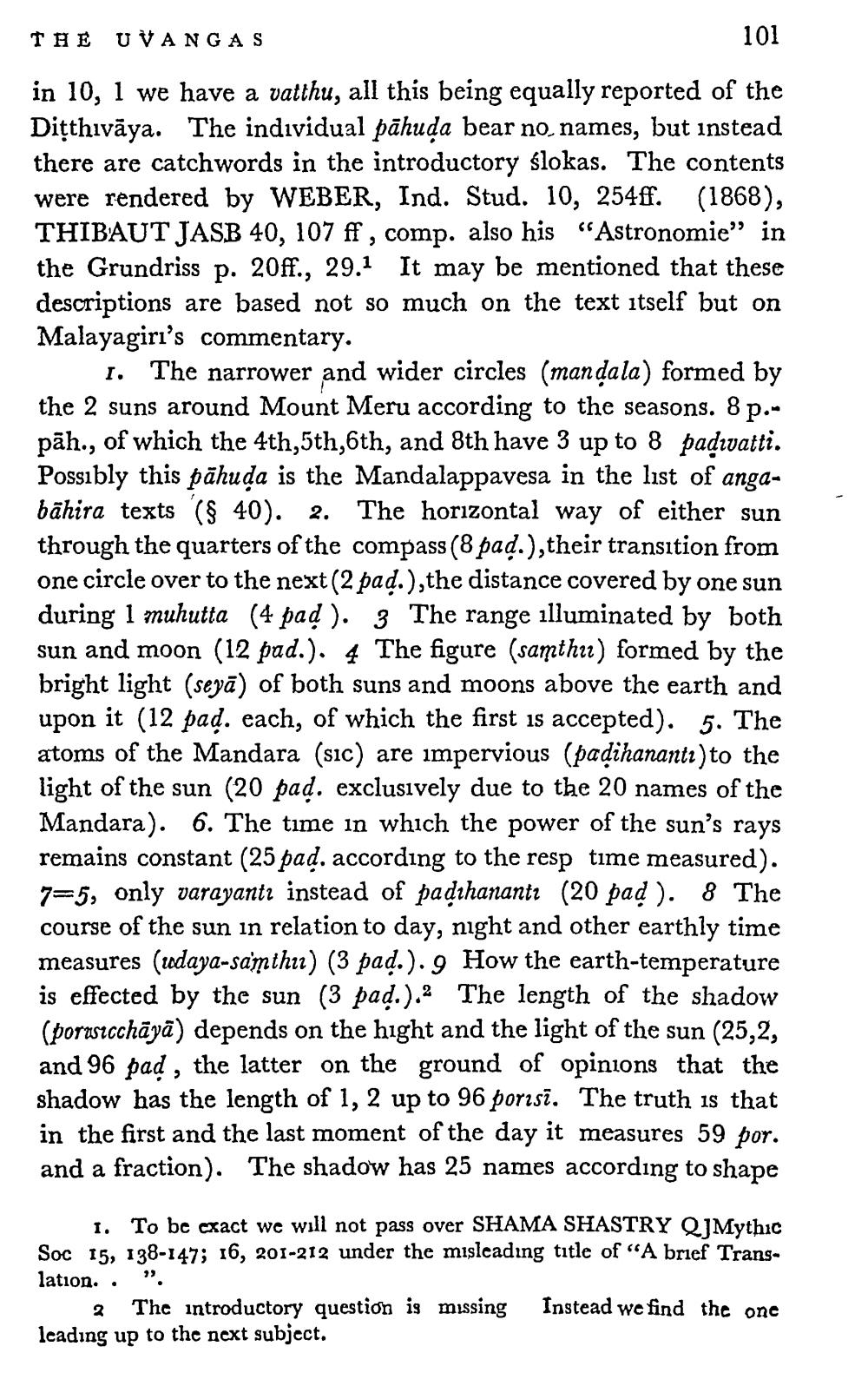________________
THE U VANGAS
101
in 10, 1 we have a vatthu, all this being equally reported of the Diţthivāya. The individual pāhuda bear no, names, but instead there are catchwords in the introductory slokas. The contents were rendered by WEBER, Ind. Stud. 10, 254f. (1868), THIBAUT JASB 40, 107 ff , comp. also his "Astronomie" in the Grundriss p. 208., 29.1 It may be mentioned that these descriptions are based not so much on the text itself but on Malayagiri's commentary.
1. The narrower and wider circles (mandala) formed by the 2 suns around Mount Meru according to the seasons. 8 p.pāh., of which the 4th 5th 6th, and 8th have 3 up to 8 padivatti. Possibly this pähuda is the Mandalappavesa in the list of angabāhira texts ($ 40). 2. The horizontal way of either sun through the quarters of the compass (8 pad.),their transition from one circle over to the next(2 pad.), the distance covered by one sun during 1 muhutta (4 pad ). 3 The range illuminated by both sun and moon (12 pad.). 4 The figure (samthii) formed by the bright light (seyā) of both suns and moons above the earth and upon it (12 pad. each, of which the first is accepted). 5. The atoms of the Mandara (sic) are impervious (padihanantı) to the light of the sun (20 pad. exclusively due to the 20 names of the Mandara). 6. The time in which the power of the sun's rays remains constant (25 pad. according to the resp time measured). 7=5, only varayantı instead of padıhanantı (20 pad ). 8 The course of the sun in relation to day, night and other earthly time measures (udaya-samthii) (3 pad.). 9 How the earth-temperature is effected by the sun (3 pad.). The length of the shadow (porwicchāyā) depends on the hight and the light of the sun (25,2, and 96 pad , the latter on the ground of opinions that the shadow has the length of 1, 2 up to 96 porisī. The truth is that in the first and the last moment of the day it measures 59 por. and a fraction). The shadow has 25 names according to shape
1. To be exact we will not pass over SHAMA SHASTRY QJMythic Soc 15, 138-147; 16, 201-212 under the misleading title of "A brief Tranglation. . ".
2 The introductory question is missing Instead we find the one leading up to the next subject.




